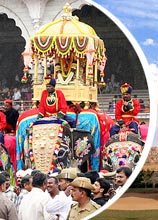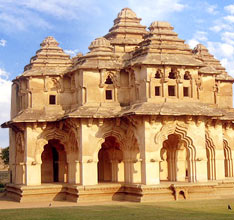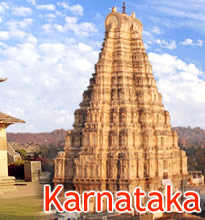 Bidriware
is a flourishing handicraft of Bidar, North Karnataka. The craft of
Bidriware was introduced in Bidar by a Persian artisan
Abdulla-bin-Kaiser, who was among a group of skilled workers brought
from Iran by Sultan Ahmed Shah Wali Bahamani in the early 5th century.
Abdulla's expertise in this exquisite craft impressed the Sultan to such
extent that he arranged for the training of local craftsmen in bidriware
handicraft in the Mahmud Gawan madrasa.
Bidriware
is a flourishing handicraft of Bidar, North Karnataka. The craft of
Bidriware was introduced in Bidar by a Persian artisan
Abdulla-bin-Kaiser, who was among a group of skilled workers brought
from Iran by Sultan Ahmed Shah Wali Bahamani in the early 5th century.
Abdulla's expertise in this exquisite craft impressed the Sultan to such
extent that he arranged for the training of local craftsmen in bidriware
handicraft in the Mahmud Gawan madrasa.In its original Persian avatar, Bidriwork involved the inlaying of gold or silver on a steel or copper base. The present method envisages an alloy of zinc and copper as the base metal. Artisans sketch intricate floral and geometric designs on the matt black surface using a sharp metal stylus. This special type of encrusted metalware was used to embellish various objects, including platters, paan boxes, goblets, hookahs and trays.
A unique aspect of the Bidriware craft is the soil used to ornament the art objects. This soil, which has not received rain or sunlight for centuries, is collected by artisans from the inner areas of the Bidar fort. The soil contains ingredients that give a lustrous black color to Bidriware. Such paucity of raw materials impedes the mass production of Bidriware artifacts.
The intricate nature of the Bidriware craft demands painstaking efforts from the artists.










